Does Making New Friends Make You Anxious? Here’s How To Make Small Talk So It’s A Little Easier For You (Or Your Child)

For many adults, teenagers and tweens, making small talk can feel nothing short of torture. Unsure of what questions to ask to keep a conversation going, when to chime in or what topics to talk about, their conversations are stilted.
Far too often, joining a conversation may feel impossible, so they sit silently and are ignored by peers.
Small Talk is the Opportunities to Connect & Make New Friends
Small talk between classes, at social events, in small or large groups and when you run into someone are all opportunities to connect and to begin to nurture a friendship. Small talk is the first step or initial conversation that leads to deeper, and more meaningful connections. Without it, it’s hard to leap into things like friendship or comradery. This is true whether you’re on the playground, at the water cooler or in the boardroom.
Bonds are not created overnight. Small talk and light conversations help people connect and feel each other out to see if a deeper connection is possible or desired. Easy chats like this are the doorways to increased sharing and deeper intimacy between friends.
Why Conversation Skills Are So Critical For People Who Are Anxious, Introverted or Have ADHD
Anxious and introverted people are often unsure how to proceed with conversations. Often this sense of dis-ease is fueled by past experiences where small talk or conversations were awkward or not so easily created. Past experiences like this can leave a person who is already a bit unsure of the world feeling confused, nervous or worried about how to even get started. And this is especially when they are trying to avoid the same outcomes they experienced in the past.
The good news is that the mechanics of building a conversation are the same for everyone. Once you know the ingredients, you can fit your own unique personality and conversational style into the recipe.
This is the important part.
Small talk and chatting with strangers is not something that’s uniquely difficult for someone with anxiety, introversion or ADHD. But, most people who have different ways of approaching communication and relationships have other variables to consider.
Knowing the “formulas” for a great conversation are not enough to make it work for you. But, when you know “how” to make small talk, you can then layer in your own unique way of being in the world so making friends “your way” is easier over time. This is how you get to be both your authentic self AND connect well with others.
What is Involved in a Good Conversation?
Good conversation skills involve feeling out the person and the situation around you. Then, getting to know the person you want to connect with and finally, sharing information about yourself.
It all begins with small talk. So, when you don’t engage in small talk with co-workers, peers or friends, you leave other people unclear of your intentions. And because small talk is inherently odd (you are talking to a stranger after all – so you know very little about them), there is a lot of weight placed on first impressions. Ideally, you want to minimize coming across as irritated, awkward, rude, or disinterested and instead come across as friendly, open and interested.
Small talk is the first step and when it’s skipped over, it’s often that you’re not being “left out” or passed over for another person, it’s more that the person you were trying to connect with didn’t get enough from you to make a connection and increase their interest in really becoming friends.
Let’s Start At The Beginning, What Exactly Is “Small Talk?”
Small talk is a light conversation, or “chat” around a topic that you engage in for a few minutes. It can happen once and that leads to a longer conversation or it can happen many times and that eventually leads to a deeper conversation. Every situation is different. But, at its essence, small talk is lighthearted and relaxed.
The goal of small talk depends on the person you are talking to. If you are trying to bridge from small talk to a friendship, then finding out more about the person and adding to the conversation is key.
Small talk has a purpose. It is not pointless as some have coined it. It allows you to bridge from “hi” to a deeper relationship.
The Value of Small Talk:
- Curiosity – A way for us to feel each other out, see if there are shared interests and get to know each other better
- Purpose – Allows for different conversations for different purposes, with different people.
- Build Relationships – Reciprocal sharing over time allows you to nurture relationships and It makes the other person feel comfortable and welcome.
- Reduces Anxiety – Keeps conversations light, so others don’t feel uncomfortable or bombarded.
- Recognize Cues – Helps you interpret social cues in an effort to understand the environment.
How To Make Small Talk
Start with Social Spy – Small talk begins the very best by first observing your surroundings and then deciding about your best next step. I teach people how to do this using my technique “Social Spy.”
As a social spy, you begin by watching and noticing the person (or group of people) you want to interact with and see how they behave.
What do they talk about with others? Do you know what they like to read? Are they members of a club or sport? How do they spend time with others?
When you come from a place of really trying to find out about the person before jumping into a conversation, then you create a real reason to talk. You’re capable of asking questions and connecting at a deeper level to their interests and likes.
You can watch more about how to be a great Social Spy in my TedX talk below.
Now that you’ve spied and observed the people (or group of people) you want to engage with, here are my best 8 tips on how to start a conversation easily and effectively.
8 Steps to Start A Conversation With Someone You Don’t Know Well
1. Greet the other person – Start by saying “Hello.” If you don’t know their names, simply remind them of yours. Smile and look attentive.
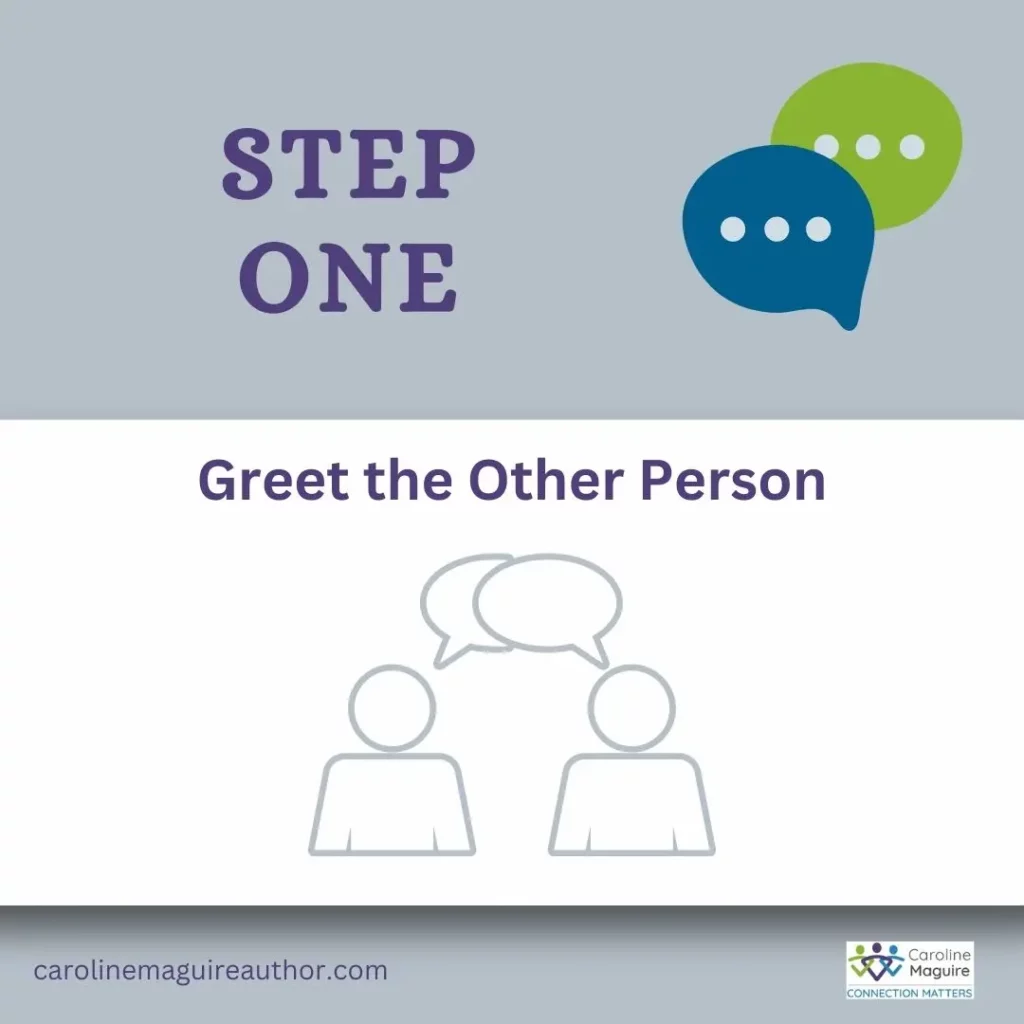
2. Ask open-ended questions or add a comment to what is already being discussed – Starting a conversation can feel daunting, but just asking a question can begin the reciprocal and light nature of chit chat. Getting-to-know-you questions can help you be curious and learn more about people.
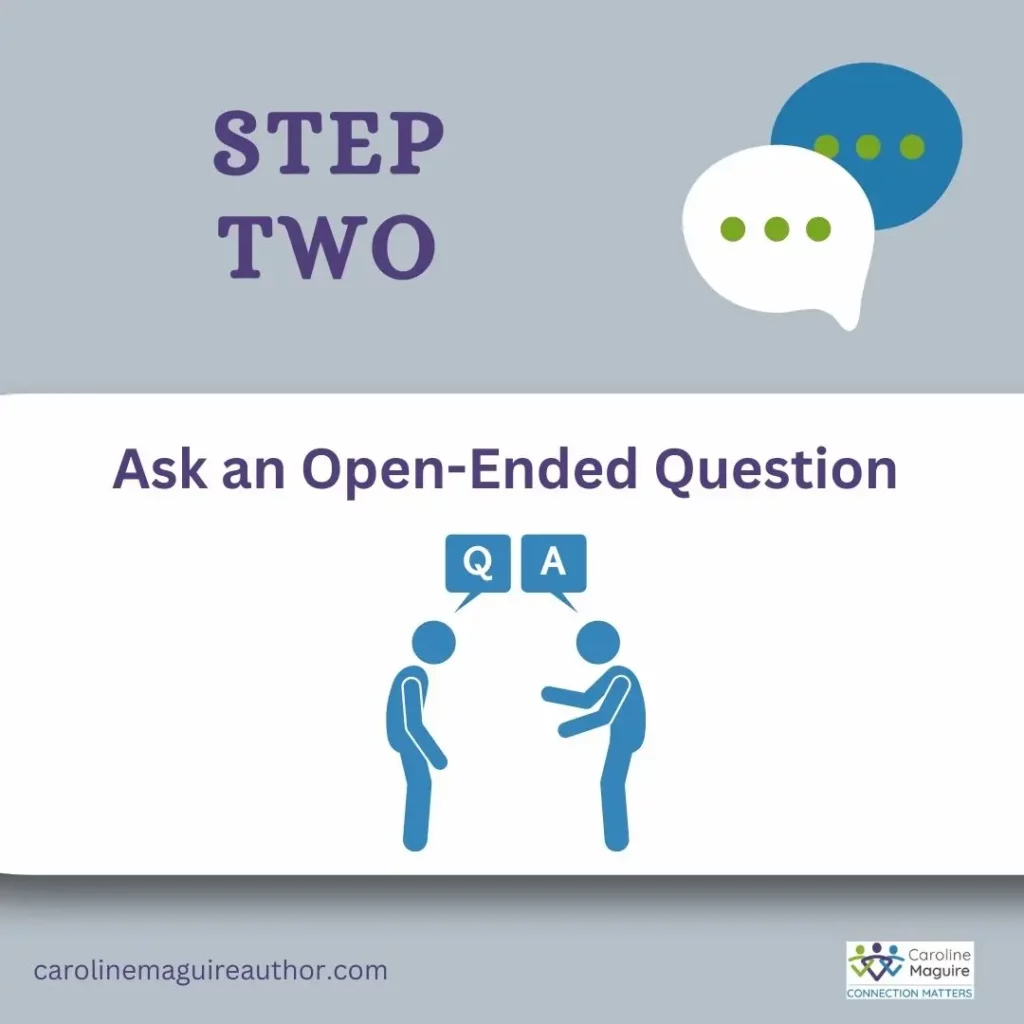
Examples of open-ended questions:
- What did you learn about XX?
- What do you think about XX?
- What did you do on your summer break/at recess/last night/in class?
3. Build on the topic– Remember that small Talk is reciprocal and each part of the discussion leads to more conversation. It’s wise to focus each of your comments such that they build on the last comment from the other person.

One easy suggestion is to respond based on what you have in common. The more you chat with someone and engage in shared experiences, the more you get to know them and the more you have to talk about. Practice staying on topic and note if the other speaker is veering to a new topic or staying with the original topic.
4. Listen and be curious– Listening is hard. And very few people get it right all the time. If you get distracted, you might miss parts of the discussion and that’s OK. Instead of thinking you have to listen perfectly, try to approach learning how to listen better as a practice, not something you have to “get right” all the time.

It is true that listening is a key to communication. I teach clients to practice their listening skills by repeating back or reflecting back what was said to you. When you do this, look the other person in the eye and try to be present and respond to what they have to say. It is very common to want to jump into a conversation. When a person sees that you are already thinking about what you want to say next, they know you are not listening. This gives the impression that you are not really interested. Just sit back and let the other person talk. Be present and be in the moment.
5. Make supportive comments to encourage the other person to keep sharing. Make short comments to let the speaker know you are listening and agreeing. It encourages the speaker to continue and shows you’re interested in what they’re saying to you.
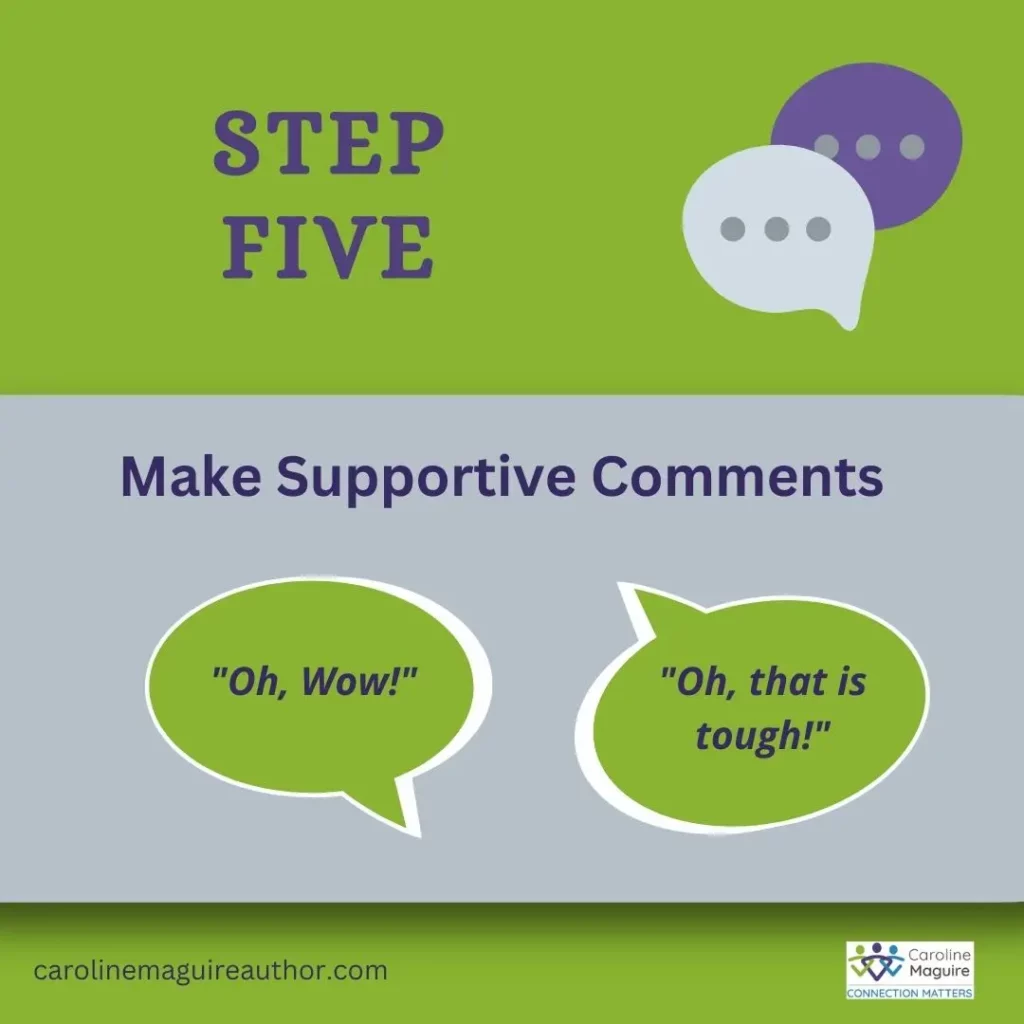
These can be simple “mmhmm” comments as they are speaking, or something more elaborate like:
“Thank you for putting the time into explaining this to me”
“This gives me food for thought.”
“Mmm, I get that.”
“Oh that’s tough”
“I hear ya, how interesting.”
6. Observe body language and nonverbal signals from the person you’re speaking with – Albert Mehrabian at the University of California, Los Angeles, explained in his 1971 book Silent Messages that 70% to 93% of all communication is nonverbal. Body language conveys a lot about the person and their intentions, beliefs and feelings.
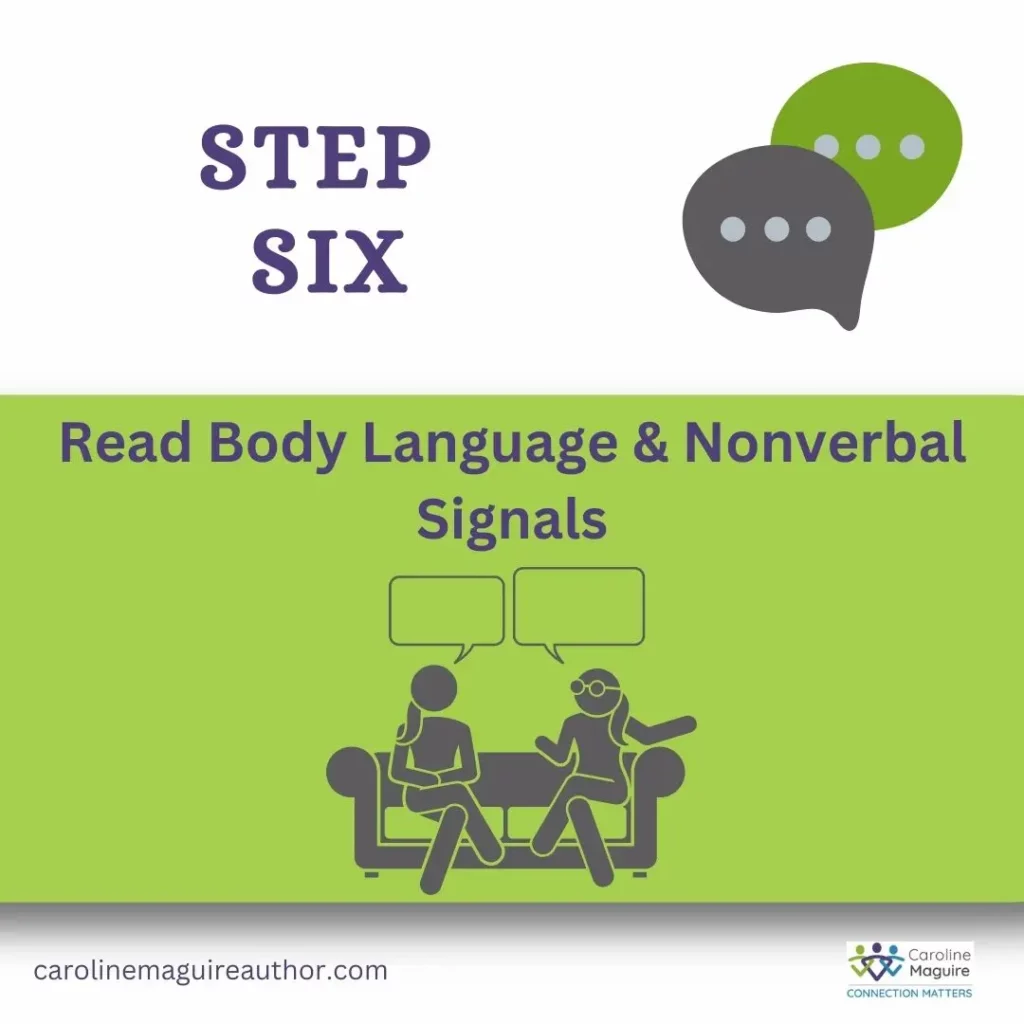
If you want to convey an open and interested body language, have an open and welcoming stance. No one wants to engage with someone standing with their arms crossed or yawning without explanation.
If you’re curious about how people show their interest, one exercise in daily life is to practice watching people in conversation. This could be at a food court or on the street, wherever you can quietly and unobtrusively observe others.
Ask yourself what various facial expressions, postures or body language says to you? How are you reading their physical stance and gestures? Play a game guessing what their body language tells you.
7. Use bridging questions and comments to keep the conversation going. – Be curious, but be careful not to turn your conversation into an interrogation. If you are discussing a Netflix series, for instance, ask thoughtful questions about what makes them prefer this series to another. Which series do they not especially like?
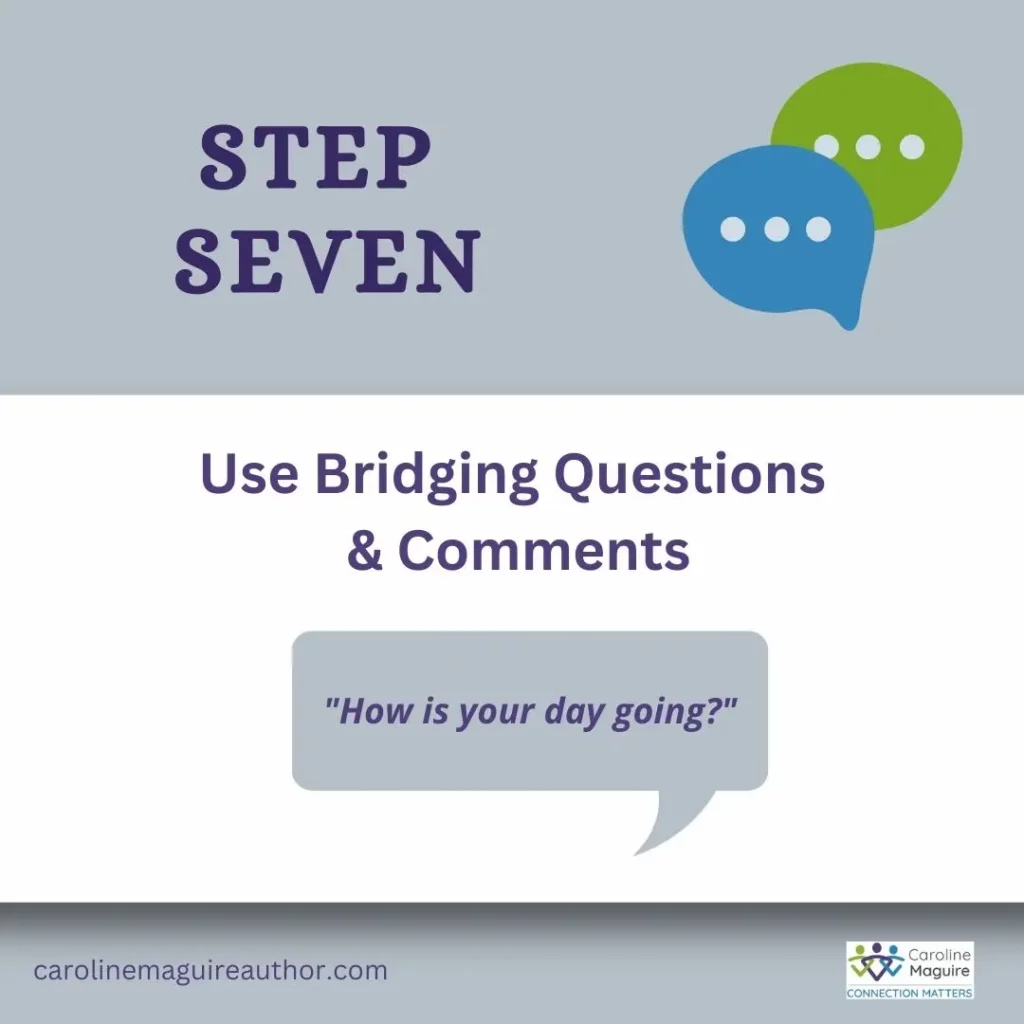
Examples of bridging comments:
“Tell me more about that,”
“Oh, interesting,” “Mmmm, I didn’t know about that.”
“I would love to know more.”
8. Practice without needing to “get it right.”– Ask close friends, your partner or family members to help you practice or give yourself a mission to practice once a day. Practice making chit chat at family dinner, in the car or on a walk. Check for cues such as eye contact and reading body language to see signs that the person wants to continue talking.
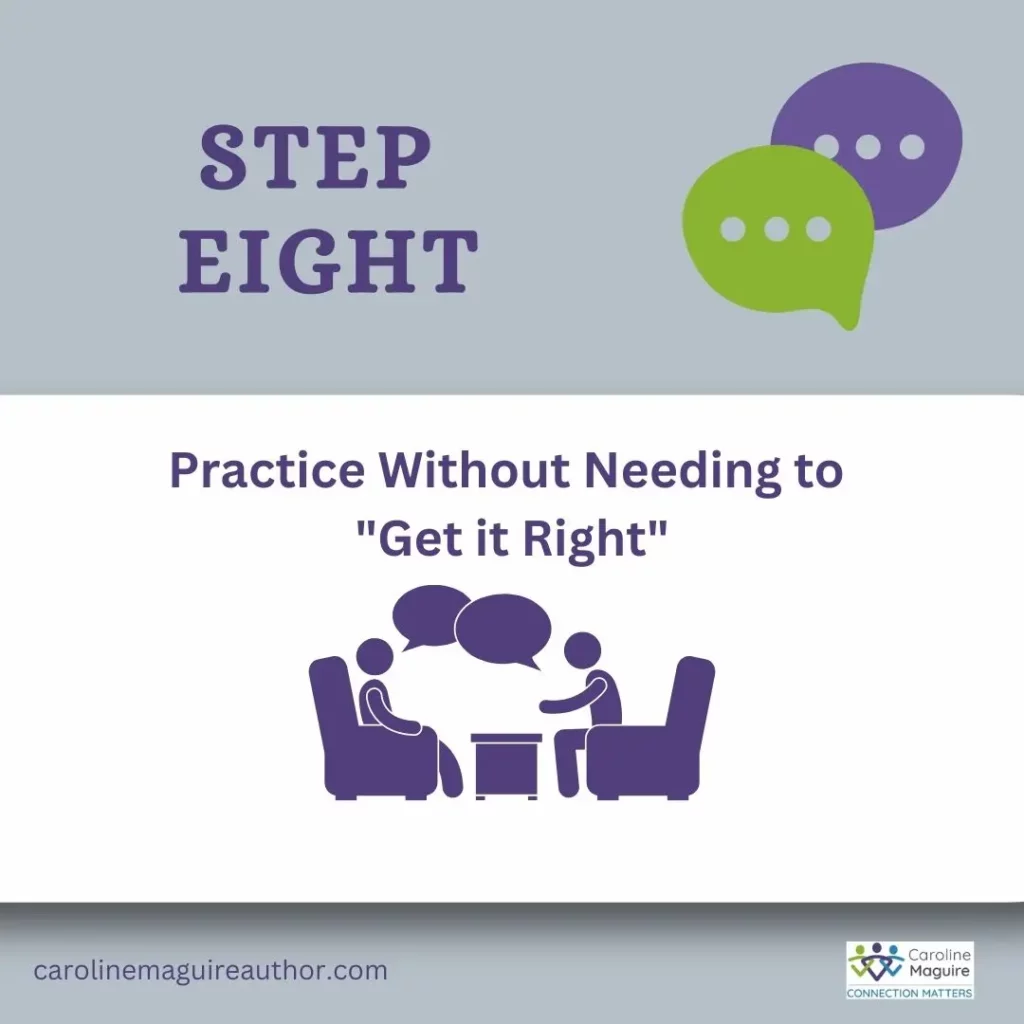
Here are a few additional tips that can help you make the most of your practice.
Good Small Talk Topics To Start With
Making conversation is about being curious and being reciprocal. The art of making small talk is to help you find out about others and to detect common interests. Remember, chit chat is light and breezy. Use your curiosity and share your interests and common experiences so they can learn about you. Try to step into their shoes when possible. Empathy is a very valuable “glue” when connecting with others.
Good example of small talk topics include:
- Sports
- Teachers
- People you know in common
- Games
- Hobbies
- You tube, TV shows, movies
- School
- Activities
- Weather
- Big events on the world stage
Small Talk Topics To Avoid
Because small talk is intended to be easy, light and breezy, try to keep your topics away from tense, off putting or otherwise controversial subjects. You are trying to build rapport, not get into a heated debate.
It’s also important to watch your tone when chatting with strangers. How you project your tone can change the meaning of what you are trying to say. You might want to praise someone by saying, “I can’t believe you did that!” But if you take the wrong tone, it may come across condescending. Be careful of a tone that is harsh, jarring, passionate, aggressive, abrasive.
Avoid talking about:
- Body fluids, family trauma, raw emotions, odors, hygiene, sexual history, religion, politics, personal finances, health, gossip and overly vehement opinions.
- Don’t share personal details of life, thoughts, memories, opinions, dating history, family drama, secrets and flaws – they are off putting and unexpected.
Finally, How To Gracefully End or Exit A Conversation
Naturally, your small talk will come to an end. Naturally this happens when you’ve been talking long enough and you simply need to move on. To keep the chat friendly, you want to end it with as much care and concern as you started it. To end it gracefully, you can practice these exit lines, both in person or virtually:
“Well, nice to see you.”
“Good chat. Until next time.”
“I’ve got to get back to work, but I look forward to hearing how things turn out for you.”
“Glad to hear you are doing well. Let’s connect again soon.”
Small talk is a wonderful way to explore meeting new people and hopefully making new friends. It’s a life skill that helps everyone and it is a skill you will use in more settings that you might imagine. Mastering it takes time, but once you have a greater comfort with how it works, you really can connect with people in almost any situation.
Give the steps above a try and please share in the comments how it worked for you.
Updated: 3/9/23
Suggested Reading:

Hi Caroline,
I work with adults with ADHD and ASD. The chit chat course sounds good, but I don’t know if its for me. I am a Psychologist and am good at the skills you talk about. Do you think I would benefit from your chit chat course in terms of me teaching the skills to my clients? Is this course for mental health practitioners?
Pingback: To hear and be heard: ideas for meaningful conversations for nurturing life - We Thrive